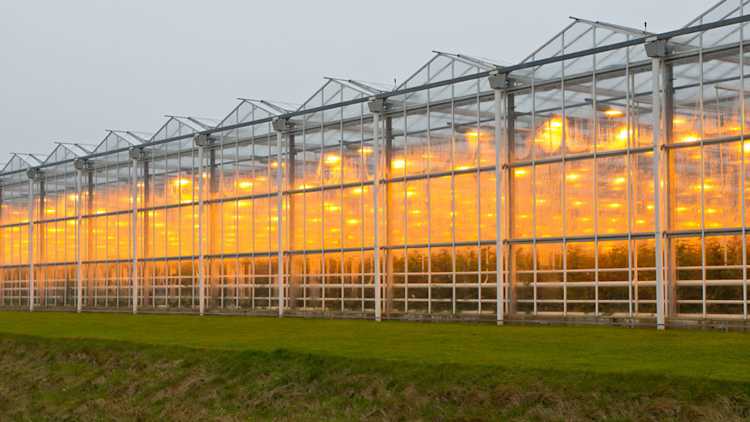Crop lighting lets the possibility of year-round production shine

What began as shelters to keep the frost off seedlings have become food production powerhouses.
Today’s commercial greenhouses leave nothing to chance; their responsive temperature settings, continuous humidity, hydroponic growing conditions, and precise pest control allow operators to create near-perfect growing conditions. Add to that energy curtains and shading mediums that block the sun during high-light times of the year, and nothing is left to chance.
Protected from the volatility of mother nature, greenhouse production has been able to outpace traditional field farming at a rate of 15x more yield per acre, with 90% of greenhouse production marketable vs. 40-60% under challenging outdoor field conditions.
Technological advances have made this possible. The piece that has not been easily recreated is sunlight. Simulating the sun’s rays during low light times of the year is costly and complex. 2020 Statistics Canada reported there to be 4,469 acres of greenhouses in Canada, with 3,211 of those acres (72%) in Ontario. While it’s unknown how many of these acres are lit, the number is growing. First implemented in the European market, crop lighting continues to grow in popularity overseas and at home, where we see strong uptake across North America.
Crop lighting has the potential to further push greenhouse growing potential by enabling growers to recreate the July sun in January. This technology is most common in new greenhouse builds, with some producers adding grow lights in retrofits.
Crop lighting is important because it:
Supplements the sun’s rays during low-level times of year
Extends the seasonality and profitability (yield) of a crop
Allow growers to recreate optimal light conditions regardless of the time of year, or global location
This chart compares the two most common types of lighting systems found in today’s greenhouses.
Producers who have integrated lights into their greenhouse operations report:
25 – 30% increase in revenue, pricing has influenced potential increases
15 – 30% more production
Grow lights cannot replicate the sun, however, their ability to mimic its’ rays is proving fruitful in some commercial greenhouse applications. Producers will ultimately decide which grow light application — if any — will best suit their operation needs, crop type, and budget.
Article by: Hillary Kerkvliet, Senior Appraiser and Megan Mailloux, Data Analyst